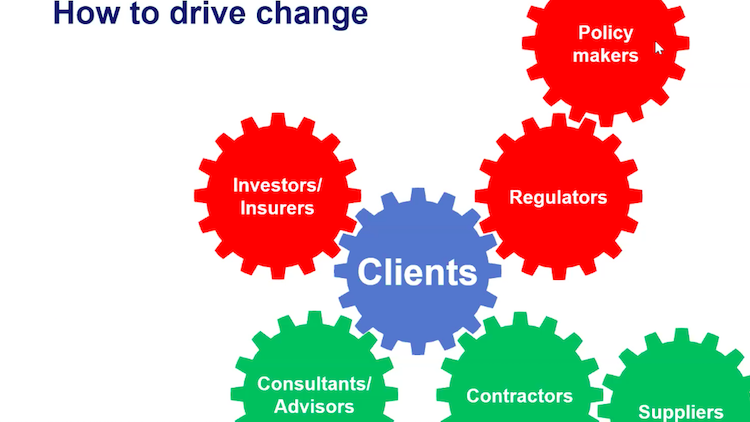
Clients, the government and the wider change debate were all highlighted as key to the increased adoption of information management by expert panellists at the opening session of the Digital Construction Summit 2021.
The headline session reviewed 10 years of BIM and looked ahead to the next steps.
Anne Kemp OBE, chair of the UK BIM Alliance and technical director at Atkins, made the point that BIM is not an end in itself.
She said: “What’s the purpose [of BIM]? Information management should not be for its own sake: it needs to be about purpose.
“May be one of the mistakes that we’ve made is we’ve not really embedded information management and gone native in net zero, building safety, whole life value and levelling up – using that language rather than BIM/information management terms. Information management needs to be an enabler.”
Dave Philp, impact director at the Construction Innovation Hub and digital consulting & strategy director at Aecom, agreed and highlighted the wider context 10 years ago: “It’s important to remember we had a cohesive government strategy that included project bank accounts and government soft landings, which were equally as important as BIM – it’s important that we don’t think about BIM in isolation.”
All the panellists agreed that there remains a key role for government to play.
Paul Morrell OBE, who was the government construction adviser that launched the Government Construction Strategy 10 years ago, noted: “The conversation between industry and government has become more distant [in the past five years]; a government is entitled to think ‘it’s your industry, so get on with it’, but the government needs to stay in the conversation, encourage and support and occasionally fund a bit of work where there’s a market failure and use its market power.”
Kemp agreed: “We need to have the right conversation with the right language.”
Inevitably, the debate turned to the role of clients.
John Ford, BIM& digital delivery lead at Galliford Try and a member of the BSI BIM technical committee highlighted an issue that clients face: “[They] need better support, they need the right advice; clients are still receiving advice that says if they use a ‘this template’, they are compliant with ISO 19650-2.”
Mark Enzer OBE, director of the Centre for Digital Built Britain and CTO at Mott MacDonald, argued: “We need to know which levers to pull to make the most change for the least effort – and the most important levers are around clients.
“If clients ask for the right thing, they get the right thing; if they ask for the wrong thing, they get the wrong thing, so clients are really key to change in the supply chain, whether consultants, contractors or suppliers.”
How then are clients’ mindsets changed? “Investors and insurers have a main part to play: they could demand that clients have higher quality digital assets and that would change client behaviour,” Enzer suggested.
Morrell concluded with a his vision of the future: “It’s a shame the industry needs its clients to tell it what to do – it’s understandable to a degree, but it’s a shame. I’m looking for someone who says ‘this is our product: we don’t sell practical completion – we sell an asset that you can operate’. I’d love to see more of the industry moving that way.”
The Summit was run as a virtual even with nearly 1,000 industry professionals registering for the three webinars over two days. Partners for the event were the Chartered Institute of Building, Revizto and Trimble Viewpoint, Construction Manager and BIMplus.
Read the coverage of the rest of the Summit:
Comments
Comments are closed.













I think an important note here was our discussion around procurement. I think on the education side especially, we as an industry have got really good at selling an “asset to operate”, providing innovation. But those that choose to adopt single-stage procurement at the lowest cost wins (they may argue best value…but its lowest cost in reality), then we will always be limited by that one denominator, no matter how much value you try to push into the product, it will often be value-engineered out when your told the primary metric CAPEX is the focus.